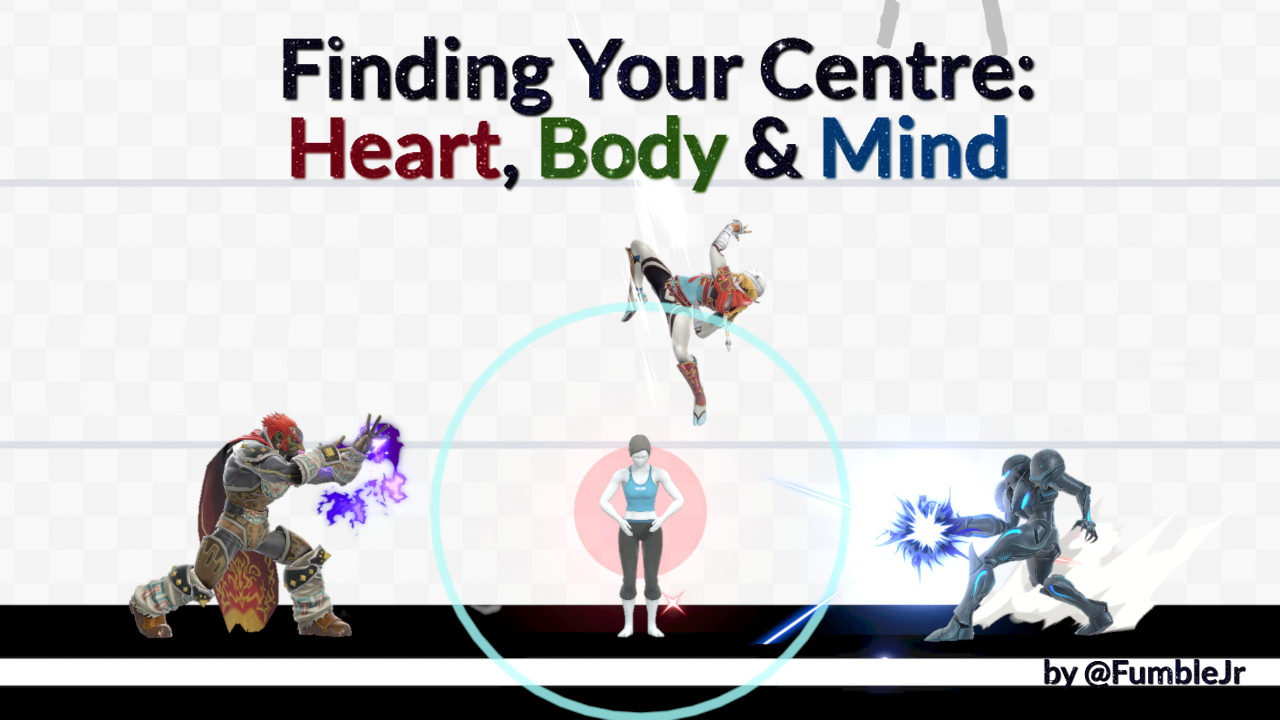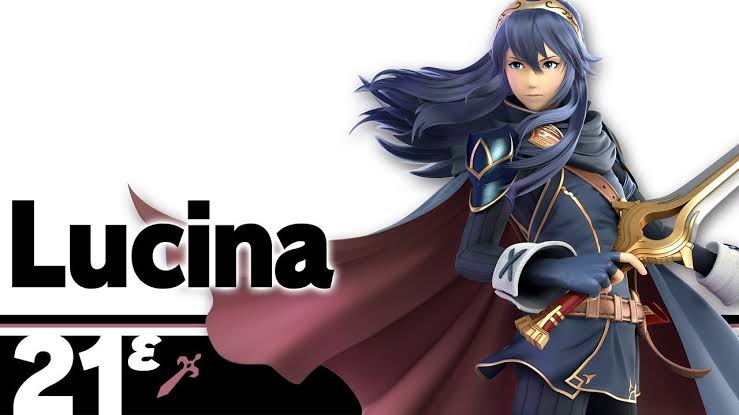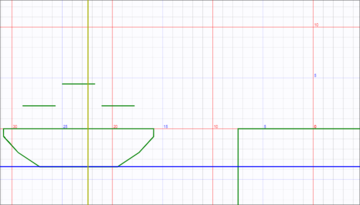Finding Your Centre: Heart, Body & Mind

Fighting game players have this concept of Mind, Body and Heart players. This concept is a lens to examine how different players excel in different ways, for different reasons.
Mind players wield information about the game to great success. They’re better at deducing a gameplan from raw information like frame data or how moves interact. They know how to control the flow of the game and create situations where their options are superior.
Body players are execution specialists who use fast reaction times and proficiency with complex inputs to hit specialised tech, perform optimised punishes and find parries at an inhuman rate.
Heart players are able to intuit their opponent’s choices better. They centre their own gameplay around the opponent’s habits to find reads where other types of players can’t.
Everyone is a unique blend of these three types of players.
Every character interacts with this concept in different ways. There are trends in the designs of characters, like zoners and mind players fitting well. Or rushdown and body players. Or heavies and heart players.
The way you interact with your character’s tools can vary wildly depending on how you process the game and look for options. Because of this, I think it’s really insightful to consider where both you and your opponents fall on the spectrum of players.
Any character can excel with any mix of player type, it’s about finding the balance that works for you and learning how you might be able to leverage other parts of your approach to the game to find advantages.
There’s no simple hierarchy in this concept, each player type is equal but different. I prefer to view it through the lens of how one type of gameplay can beat a certain type of player because that helps us make informed decisions.
Example:

It’s important to reflect on these concepts and re-assess how you relate to them over time. As you improve your gameplay will grow in different ways and your lifestyle can affect your ability to perform better at certain things.
It’s important to understand that you have certain behaviours which are slower to change than others, while others can change day to day or moment to moment.
Sometimes, the game will pose you challenges which are beyond even what top level players are capable of. Take Light vs Maister at Ultimate Summit 4, where Light chose to give up his usual reaction-heavy ledge trapping and instead safely retreated across stage to chip with Fox laser.
Light is one of the strongest Body players in Ultimate, but the challenge and warped risk/reward of reacting to Game & Watch’s ledge options led to him changing his gameplan to something more Mind-oriented and it worked well for him.
As you improve as a player, your flexibility to express yourself in each category will grow as well and making adjustments may be necessary to beat certain opponents.
The Mind/Body/Heart framework is a simple format through which you can view the game and inform your decision making process.
To help give some direction to apply this concept, here are some pointers for how each playstyle can improve your gameplay:
Mind: Crunch the data. Work out what you can punish oos, or what you need to parry. When are your options superior to theirs? Is it hitboxes? Start up? Cooldown? Or does their character outclass you in those kinds of interactions. If so, how can you reduce the occurrence of those interactions? E.g. Who should be jumping/swinging first in neutral? For a lot of MUs in Ultimate this feels like an essential question to ask yourself.
What about your BnB and kill confirms? Are you consistent? How can you find those more efficiently and how can you engineer those situations? Do you have contingency plans in place for your strings? Could you frametrap their character for more reward?
Work on the gameplan. Manage the risk/reward of each interaction. Learn what their character is capable of, and if your reward outpaces theirs, is it worth taking the risk in neutral? What if you have a lead? What if you’re behind?
Body: Learn the tech. What went wrong in neutral, advantage and disadvantage? What went right, and could it have been pushed further? What haven’t you implemented? Will new options like footstool oos, or crouch ledge slip give you an edge? Are there character specific things you can implement?
Optimise the punishes. If you have confidence in your execution and can hit your biggest reward combos, you can win games with fewer neutral wins. That’s less margin of error for success, it means you get to push your strength as a player harder.
React faster. Follow DI & SDI. Learn animations (this is especially important for ledge and tech options). Learn which options to expect in which scenarios. The more ready you are, and the more exposure you have to these options will allow you to react faster. Many animations in this game have specific tells early into their start up (e.g. Ganon side b has him raise a hand behind his head on frame 2), you need to be familiar with them in order to react faster.
Heart: Get the experience, both meta knowledge and player-specific. What do most Falcos like to do after whiffing an up tilt? What did your opponent do? Could you have been ready to punish it? What options does their character use against yours? How can you beat those directly?
Look at their habits more closely. When/why do they jump, or spotdodge, or roll, or mash options, or dash grab, etc? Are there tells? Can you bait an option you can punish directly?
It’s not all in the moment. VOD reviews can form the backbone of a heart player’s expertise. Pattern recognition is one part of the heart playstyle and more exposure to the patterns, the more ready you’ll be to capitalise on them.
It’s important to recognise that all of these approaches help inform each other.
Having better knowledge of frame data or gameplans can help you apply all that fancy tech you’ve learned. Or it could help you know which of your options is actually going to work when you read something.
Having tighter reactions or optimal punishes can entirely shift how you want to build a gameplan, or enable your ability to read and punish a broader range of options.
Having better intuition allows you to be more flexible in your gameplan. It can also let you extend advantage much harder than executing an optimal combo if you read a jump or panic air dodge.
As you improve as a player, you’ll also improve on your ability to weave these concepts together and help guide your decision making.
Now that we’ve covered ways this concept can be applied, how would you break down the elements of your own gameplay into this concept?
Take a moment, sit with it and consider how you play. Consider how you want to play.
But is that the best direction for you?
Personally, I tend to view myself along the lines of 70/20/10 in Mind/Body/Heart. I like to build up a deep well of knowledge about the game which I can use to strategise and inform decisions. My reaction times are pretty alright, but my execution is often spotty and I really dislike the uncertainty of needing to find reads in order to succeed but I also value the possibilities they unlock.
My impetus for writing this article was wanting to reflect deeper on these concepts. Until recently, I was trying to play like I was 50/50/0 Mind/Body/Heart. I wanted to improve my execution and play entirely off of reactions and informed decisions to find tight openings other players would pass up.
But that’s not me.
It was quite tiring to force myself into tighter execution and let myself down mid-set. I used my knowledge of the game to highlight things that should be possible, assuming my execution was perfect and I always shot for those interactions on the belief that even if I failed, I was pushing myself for what I viewed as the ‘best’ way to play.
But that wasn’t it at all.
I was trying to bruteforce a specific way for me to improve, but that was to my own detriment. It wasn’t working. It wasn’t natural. It might be optimal to play that way, maybe, who knows? But would it really be superior to another approach? It’s just a different style of gameplay.
And it was one that truly was not optimal for me.
Now that I’ve corrected my outlook on playing the game, Smash has felt a lot more comforting again.
It’s easy to fall into traps of what’s optimal because the game is built upon objective information. We can act like we see patterns, or understand something deep and about how all the complex ideas in the game interact but without TAS levels of performance what’s optimal is simply what works best for us as players and our subjective perspectives on this objective information.
And a healthy, unique mix of all three concepts is going to be the answer for most of us.
If Smash has been frustrating you, or you’re not sure how to approach a new challenge in the game a new perspective can help. The Mind/Body/Heart concept is an interesting one to consider and it can be useful to illuminate what’s going wrong, or why things are going right.
Thank you for reading, I hope you enjoyed this article!
There should be more coming soon :)
-Fumble
@FumbleJr
by Fumble 03/09/2022 00:00:00

